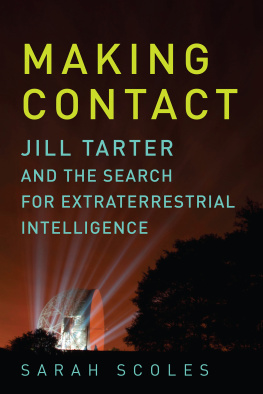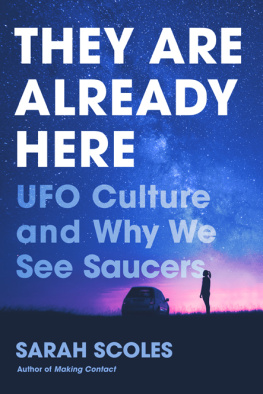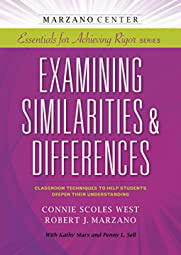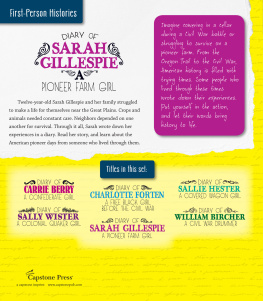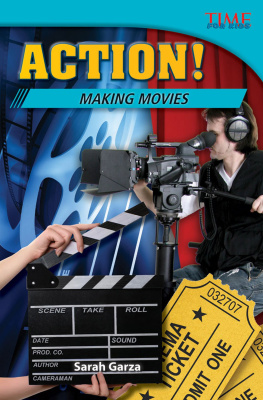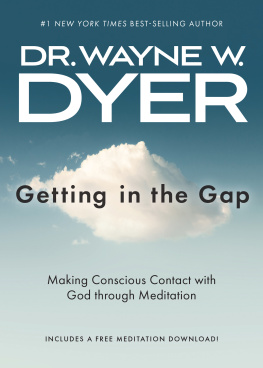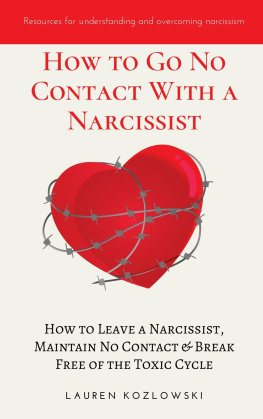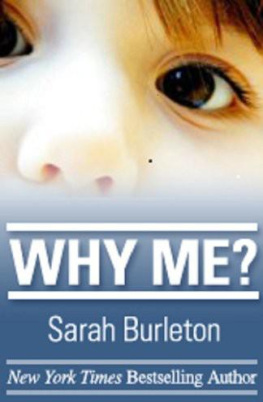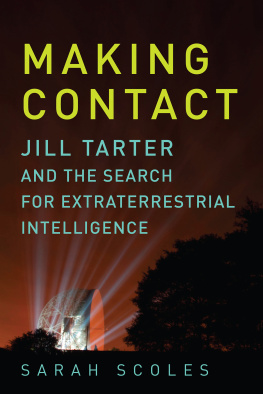Sarah Scoles - Making Contact
Here you can read online Sarah Scoles - Making Contact full text of the book (entire story) in english for free. Download pdf and epub, get meaning, cover and reviews about this ebook. year: 2017, publisher: Pegasus Books, genre: Art. Description of the work, (preface) as well as reviews are available. Best literature library LitArk.com created for fans of good reading and offers a wide selection of genres:
Romance novel
Science fiction
Adventure
Detective
Science
History
Home and family
Prose
Art
Politics
Computer
Non-fiction
Religion
Business
Children
Humor
Choose a favorite category and find really read worthwhile books. Enjoy immersion in the world of imagination, feel the emotions of the characters or learn something new for yourself, make an fascinating discovery.
- Book:Making Contact
- Author:
- Publisher:Pegasus Books
- Genre:
- Year:2017
- Rating:5 / 5
- Favourites:Add to favourites
- Your mark:
- 100
- 1
- 2
- 3
- 4
- 5
Making Contact: summary, description and annotation
We offer to read an annotation, description, summary or preface (depends on what the author of the book "Making Contact" wrote himself). If you haven't found the necessary information about the book — write in the comments, we will try to find it.
Making Contact — read online for free the complete book (whole text) full work
Below is the text of the book, divided by pages. System saving the place of the last page read, allows you to conveniently read the book "Making Contact" online for free, without having to search again every time where you left off. Put a bookmark, and you can go to the page where you finished reading at any time.
Font size:
Interval:
Bookmark:

MAKING
CONTACT
JILL TARTER
AND THE SEARCH FOR
EXTRATERRESTRIAL
INTELLIGENCE
SARAH SCOLES

MAKING CONTACT
Pegasus Books Ltd.
148 W. 37th Street, 13th Floor
New York, NY 10018
Copyright 2017 Sarah Scoles
First Pegasus Books edition July 2017
Interior design by Maria Fernandez
All rights reserved. No part of this book may be reproduced in whole or in part without written permission from the publisher, except by reviewers who may quote brief excerpts in connection with a review in a newspaper, magazine, or electronic publication; nor may any part of this book be reproduced, stored in a retrieval system, or transmitted in any form or by any means electronic, mechanical, photocopying, recording, or other, without written permission from the publisher.
Library of Congress Cataloging-in-Publication Data is available.
ISBN: 978-1-68177-441-1
ISBN: 978-1-68177-491-6 (e-book)
Distributed by W. W. Norton & Company
To Earthlings everywhere.
CONTENTS
D uring a conference celebrating the fiftieth anniversary of the search for extraterrestrial intelligence (SETI), Jill Tarter left her purse on a busa bus I happened to be driving. At the time, I was fresh out of graduate school, working at my first post-education job as a public outreach officer at the Green Bank Telescope. On that particular night, my job involved driving a large vehicle full of SETI dignitaries to the telescope so they could eat dessert underneath its dish, then driving them back, and never crashing.
I parked the bus and ran after Tarter, who was then the director of the SETI Institute and whose fictional alter ego, a character from the book and movie Contact , had been my childhood inspiration for entering the radio astronomy world.
I think you left your purse, I said when I reached her. I extended my arm, the bag hanging awkwardly from it like I was a person who didnt carry bags.
She said, Thank you, smiled, and continued toward the observatorys lounge.
In that same lounge, astronomers had held the first SETI conference a half-century earlier. They gathered under the rainbow light of a 1960s chandelier and debated this: Are we alone in the universe? And if were not, how much company do we have? They poured the foundation for the SETI work that would come, stacking itself atop their conclusions, asking over and over those same initial questions and investigating them with new scientific knowledge and technology.
As I watched Tarter walk away, I thought about how I could have recited her resume to her, having watched her career ever since Id known what a career was. That milestone of mental development coincided with my watching of the movie Contact , based on a 1985 book by Carl Sagan about the discovery of alien life, when I was twelve. I was enraptured in a way I hadnt ever been before, even though Id been reading dubious but thrilling books about wormholes and black holes and time travel for years. Here, in SETI, was this whole scientific world that I didnt know existed, and here was this person leading its chargea fierce, determined, stubborn, smart woman who asked big questions about the universe and didnt hear No as No but as Keep trying. I wanted to be like her, to investigate the kinds of mysteries she investigated, to know the things she knew.
I watched the film obsessively, mouthing, If its just us, that seems like an awful waste of space, along with Jodie Foster, who played the extraterrestrial finder Ellie Arroway. I read and reread Sagans book, glossing over my inability to understand ruby masers, obsessing instead over my cosmic insignificance and the broad brushstrokes of the big cosmic questions.
At my first college astronomy internship, with the National Radio Astronomy Observatory, I lived in a house with five other interns. One night, we watched Contact together. Heres why: it was the thing that had brought us here. And thats something Ive heard from many astronomers around my age, especially the women: Contact was their earliest inspiration, the first depiction they saw of what astronomy was, and the first time they saw a scientific character and thought, I see myself in that person.
One of the other interns said, Did you know shes partly based on a real scientist?
That real person, the intern continued, was a woman named Jill Tarter.
Fictional Contact follows Arroway as she searches for a radio signal from an intelligent extraterrestrial civilization, battling bureaucracy, politicians, economic woes, statistical unlikelihood, institutionalized sexism, and her own emotional demons. As a nonfictional woman scientist and a SETI scientist, Tarter faced the same challenges. But this is where the two womens stories depart: Arroway finds a signal. E.T. calls. E.T. sends instructions for building a spaceship. Humanity builds the spaceship (not without trials), and (not without trials) Arroway becomes the sole passenger. To my knowledgeand Ive interviewed her a lotTarter has never been on a spaceship. But if our real world does make contact with extraterrestrial intelligencea discovery that would be one of the biggest and most impactful humans have ever madewe will owe much of the thanks to the real Tarter, who got in on the early days of the field, kept it alive during its lean years, and pushed its science and technology forward, even as politicians, the public, and even other scientists said the endeavor was not worthwhile.
After I returned Tarters purse that night in Green Bank at the SETI conference, I biked home, to astronomer Frank Drakes former bachelor pada farmhouse that, set up against the woods and complete with a chicken-slaughtering room in the basement, many found remote and creepy. But I loved it, and I loved knowing Drake had lived in this house when, in 1960, he made the first modern search for extraterrestrial intelligence, called Project Ozma.
He didnt find what he was looking for. That night, I looked up at the bright swath of Milky Way stars and wondered when, or if, anyone ever would.
Three years later, when I was an editor at Astronomy magazine, I wrote Tarter an email, informing her that wed met for five seconds when she lost her purse and then asking if I could write a biography of her. After a bit of back and forth, including the question Why should I believe you can write a whole book? she agreed.
Today, Ive had the privilege of doing countless hours of interviews with Tarter, of asking her questions I havent even asked my own family members, of getting to know her in a way that has made her a regular person to me and not that soft-focus, pedestaled hero she was to me when I was younger. Weve torn apart file cabinets and photo albums; Ive pestered her peers about her personality; Ive slogged through transcripts of congressional meetings and 300-page conference reportsall with the idea of understanding how Tarter came into herself, how she came to SETI, how SETI has evolved since becoming a science, and how its future may play out.
Tarter has spent more than 40 years trying to answer the question Are we alone? And never during those decades did she know how close she may have been. The wondering keeps her up at night. But her scientific questions are, in some ways, the same as the existential questions that keep us all up at night. We have all spent dark hours wondering about our place in it all, our aloneness both terrestrial and cosmic. Tarters life and her lifes work are not just a quest to understand life in the universe: they are a quest to understand our lives in the universe.
So, spoiler alert: this book will not tell you whether They Are Out There. But hopefully it gives some insight on earthlings, and what were doing down here.
Next pageFont size:
Interval:
Bookmark:
Similar books «Making Contact»
Look at similar books to Making Contact. We have selected literature similar in name and meaning in the hope of providing readers with more options to find new, interesting, not yet read works.
Discussion, reviews of the book Making Contact and just readers' own opinions. Leave your comments, write what you think about the work, its meaning or the main characters. Specify what exactly you liked and what you didn't like, and why you think so.

